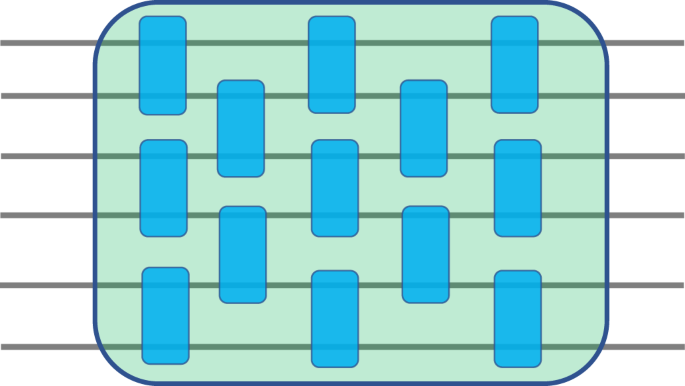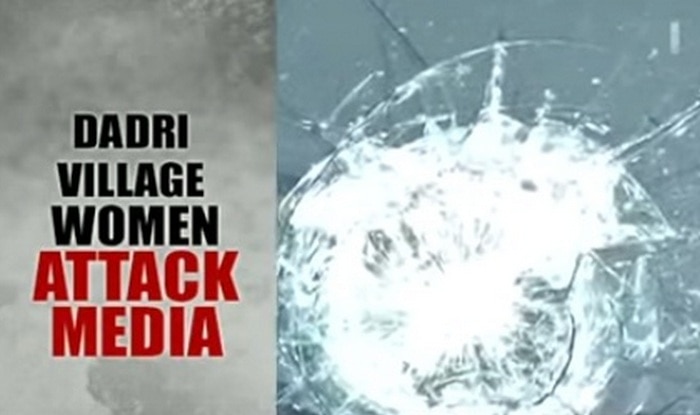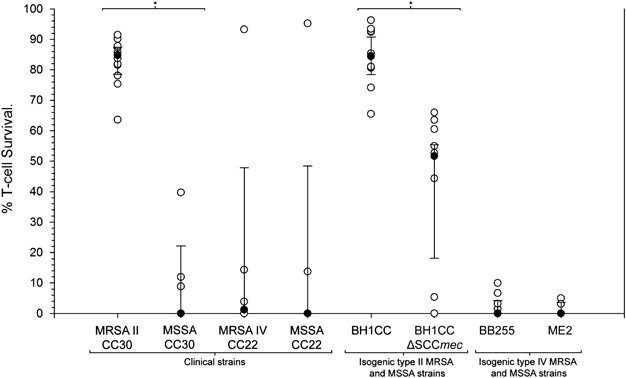
- Select a language for the TTS:
- UK English Female
- UK English Male
- US English Female
- US English Male
- Australian Female
- Australian Male
- Language selected: (auto detect) - EN
Play all audios:
ABSTRACT According to a fundamental result in quantum computing, any unitary transformation on a composite system can be generated using so-called 2-local unitaries that act only on two
subsystems. Beyond its importance in quantum computing, this result can also be regarded as a statement about the dynamics of systems with local Hamiltonians: although locality puts various
constraints on the short-term dynamics, it does not restrict the possible unitary evolutions that a composite system with a general local Hamiltonian can experience after a sufficiently long
time. Here we show that this universality does not remain valid in the presence of conservation laws and global continuous symmetries such as U(1) and SU(2). In particular, we show that
generic symmetric unitaries cannot be implemented, even approximately, using local symmetric unitaries. Based on this no-go theorem, we propose a method for experimentally probing the
locality of interactions in nature. In the context of quantum thermodynamics, our results mean that generic energy-conserving unitary transformations on a composite system cannot be realized
solely by combining local energy-conserving unitaries on the components. We show how this can be circumvented via catalysis. Access through your institution Buy or subscribe This is a
preview of subscription content, access via your institution ACCESS OPTIONS Access through your institution Access Nature and 54 other Nature Portfolio journals Get Nature+, our best-value
online-access subscription $29.99 / 30 days cancel any time Learn more Subscribe to this journal Receive 12 print issues and online access $259.00 per year only $21.58 per issue Learn more
Buy this article * Purchase on SpringerLink * Instant access to full article PDF Buy now Prices may be subject to local taxes which are calculated during checkout ADDITIONAL ACCESS OPTIONS:
* Log in * Learn about institutional subscriptions * Read our FAQs * Contact customer support SIMILAR CONTENT BEING VIEWED BY OTHERS NONCOMMUTING CHARGES CAN REMOVE NON-STATIONARY QUANTUM
MANY-BODY DYNAMICS Article Open access 20 September 2024 HOW TO BUILD HAMILTONIANS THAT TRANSPORT NONCOMMUTING CHARGES IN QUANTUM THERMODYNAMICS Article Open access 27 January 2022 NO SECOND
LAW OF ENTANGLEMENT MANIPULATION AFTER ALL Article Open access 23 January 2023 DATA AVAILABILITY Data sharing is not applicable to this article, as no datasets were generated or analysed
during the current study. REFERENCES * Noether, E. Nachrichten der koniglichen gesellschaft der wissenschaften, gottingen, mathematisch-physikalische klasse 2. _Invariante
Variationsprobleme_ 235–257 (1918). * Noether, E. Invariant variation problems. _Transp. Theory Stat. Phys._ 1, 186 (1971). Article ADS MathSciNet MATH Google Scholar * Lieb, E. H.
& Robinson D. W. in _Statistical Mechanics_ (Springer, 1972). * DiVincenzo, D. P. Two-bit gates are universal for quantum computation. _Phys. Rev. A_ 51, 1015 (1995). Article ADS
Google Scholar * Lloyd, S. Almost any quantum logic gate is universal. _Phys. Rev. Lett._ 75, 346 (1995). Article ADS Google Scholar * Deutsch, D. E., Barenco, A. & Ekert, A.
Universality in quantum computation. _Proc. R. Soc. London A_ 449, 669 (1995). Article ADS MathSciNet MATH Google Scholar * Khemani, V., Vishwanath, A. & Huse, D. A. Operator
spreading and the emergence of dissipative hydrodynamics under unitary evolution with conservation laws. _Phys. Rev. X_ 8, 031057 (2018). Google Scholar * Horodecki, M. & Oppenheim, J.
Fundamental limitations for quantum and nanoscale thermodynamics. _Nat. Commun._ 4, 1 (2013). Article Google Scholar * Brandao, F. G., Horodecki, M., Oppenheim, J., Renes, J. M. &
Spekkens, R. W. Resource theory of quantum states out of thermal equilibrium. _Phys. Rev. Lett._ 111, 250404 (2013). Article ADS Google Scholar * Janzing, D., Wocjan, P., Zeier, R.,
Geiss, R. & Beth, T. Thermodynamic cost of reliability and low temperatures: tightening Landauer’s principle and the Second Law. _Int. J. Theor. Phys._ 39, 2717 (2000). Article
MathSciNet MATH Google Scholar * Lostaglio, M., Korzekwa, K., Jennings, D. & Rudolph, T. Quantum coherence, time-translation symmetry, and thermodynamics. _Phys. Rev. X_ 5, 021001
(2015). Google Scholar * Halpern, N. Y., Faist, P., Oppenheim, J. & Winter, A. Microcanonical and resource-theoretic derivations of the thermal state of a quantum system with
noncommuting charges. _Nat. Commun._ 7, 12051 (2016). Article ADS Google Scholar * Halpern, N. Y. & Renes, J. M. Beyond heat baths: generalized resource theories for small-scale
thermodynamics. _Phys. Rev. E_ 93, 022126 (2016). Article ADS Google Scholar * Guryanova, Y., Popescu, S., Short, A. J., Silva, R. & Skrzypczyk, P. Thermodynamics of quantum systems
with multiple conserved quantities. _Nat. Commun._ 7, ncomms12049 (2016). Article ADS Google Scholar * Chitambar, E. & Gour, G. Quantum resource theories. _Rev. Mod. Phys_. 91, 025001
(2019). * Bartlett, S. D., Rudolph, T. & Spekkens, R. W. Reference frames, superselection rules, and quantum information. _Rev. Mod. Phys._ 79, 555 (2007). Article ADS MathSciNet
MATH Google Scholar * d’Alessandro, D. _Introduction to Quantum Control and Dynamics_ (CRC, 2007). * Jurdjevic, V. & Sussmann, H. J. Control systems on Lie groups. _J. Differ. Equ._
12, 313 (1972). Article ADS MathSciNet MATH Google Scholar * Brylinski J.-L. & Brylinski, R. in _Universal Quantum Gates_ (Chapman and Hall, 2002). * Childs, A. M., Leung, D.,
Mančinska, L., & Ozols, M. Characterization of universal two-qubit hamiltonians. Preprint at https://arxiv.org/abs/1004.1645 (2010). * Zanardi, P. & Lloyd, S. Universal control of
quantum subspaces and subsystems. _Phys. Rev. A_ 69, 022313 (2004). Article ADS Google Scholar * Giorda, P., Zanardi, P. & Lloyd, S. Universal quantum control in irreducible
state-space sectors: application to bosonic and spin-boson systems. _Phys. Rev. A_ 68, 062320 (2003). Article ADS Google Scholar * Bacon, D., Kempe, J., Lidar, D. A. & Whaley, K. B.
Universal fault-tolerant quantum computation on decoherence-free subspaces. _Phys. Rev. Lett._ 85, 1758 (2000). Article ADS Google Scholar * Lidar, D. A., Chuang, I. L. & Whaley, K.
B. Decoherence-free subspaces for quantum computation. _Phys. Rev. Lett._ 81, 2594 (1998). Article ADS Google Scholar * Nielsen M. A., & Chuang, I. L. _Quantum Computation and Quantum
Information_ (Cambridge University Press, 2010). * Jordan, P. & Wigner, E. P. About the Pauli exclusion principle. _Z. Phys._ 47, 14 (1928). Google Scholar * Fradkin, E. Jordan–Wigner
transformation for quantum-spin systems in two dimensions and fractional statistics. _Phys. Rev. Lett._ 63, 322 (1989). Article ADS MathSciNet Google Scholar * Nielsen, M. A. et al. _The
Fermionic Canonical Commutation Relations and the Jordan–Wigner Transform_ (University of Queensland, 2005). * Jonathan, D. & Plenio, M. B. Entanglement-assisted local manipulation of
pure quantum states. _Phys. Rev. Lett._ 83, 3566 (1999). Article ADS MathSciNet MATH Google Scholar * Ball, H., Oliver, W. D. & Biercuk, M. J. The role of master clock stability in
quantum information processing. _npj Quantum Inf._ 2, 1 (2016). Article Google Scholar * Bermudez, A. et al. Assessing the progress of trapped-ion processors towards fault-tolerant quantum
computation. _Phys. Rev. X_ 7, 041061 (2017). Google Scholar * Zanardi, P. & Rasetti, M. Noiseless quantum codes. _Phys. Rev. Lett._ 79, 3306 (1997). Article ADS Google Scholar *
Molmer, K. & Sorensen, A. Multiparticle entanglement of hot trapped ions. _Phys. Rev. Lett._ 82, 1835 (1999). Article ADS Google Scholar * Lloyd, S., Mohseni, M. & Rebentrost, P.
Quantum principal component analysis. _Nat. Phys._ 10, 631 (2014). Article Google Scholar * Marvian, I. & Lloyd, S. Universal quantum emulator. Preprint at
https://arxiv.org/abs/1606.02734 (2016). * Kimmel, S., Y.-Y. Lin, C., Low, G. H., Ozols, M. & Yoder, T. J. Hamiltonian simulation with optimal sample complexity. _npj Quantum Inf._ 3, 1
(2017). Article Google Scholar * Pichler, H., Zhu, G., Seif, A., Zoller, P. & Hafezi, M. Measurement protocol for the entanglement spectrum of cold atoms. _Phys. Rev. X_ 6, 041033
(2016). Google Scholar * Popescu, S., Sainz, A. B., Short, A. J. & Winter, A. Quantum reference frames and their applications to thermodynamics. _Phil. Trans. R. Soc. A_ 376, 20180111
(2018). Article ADS MathSciNet MATH Google Scholar * Marvian, I. & Mann, R. Building all time evolutions with rotationally invariant hamiltonians. _Phys. Rev. A_ 78, 022304 (2008).
Article ADS MathSciNet Google Scholar * Faist, P. et al. Continuous symmetries and approximate quantum error correction. _Phys. Rev. X_ 10, 041018 (2020). Google Scholar * Hayden, P.,
Nezami, S., Popescu, S. & Salton, G. Error correction of quantum reference frame information. _PRX Quantum._ 2, 010326 (2021). Article Google Scholar * Kong, L. & Liu Z.-W.
Charge-conserving unitaries typically generate optimal covariant quantum error-correcting codes. Preprint at https://arxiv.org/abs/2102.11835 (2021). * Aaronson, S. The complexity of quantum
states and transformations: from quantum money to black holes. Preprint at https://arxiv.org/abs/1607.05256 (2016). * Chen, X., Gu, Z.-C. & Wen, X.-G. Local unitary transformation,
long-range quantum entanglement, wave function renormalization, and topological order. _Phys. Rev. B_ 82, 155138 (2010). Article ADS Google Scholar * Chen, X., Gu, Z.-C. & Wen, X.-G.
Classification of gapped symmetric phases in one-dimensional spin systems. _Phys. Rev. B_ 83, 035107 (2011). Article ADS Google Scholar * Susskind, L. Computational complexity and black
hole horizons. _Fortschr. Phys._ 64, 24 (2016). Article MathSciNet MATH Google Scholar * Brown, A. R., Roberts, D. A., Susskind, L., Swingle, B. & Zhao, Y. Holographic complexity
equals bulk action? _Phys. Rev. Lett._ 116, 191301 (2016). Article ADS Google Scholar * Stanford, D. & Susskind, L. Complexity and shock wave geometries. _Phys. Rev. D_ 90, 126007
(2014). Article ADS Google Scholar * Banuls, M. C. et al. Simulating lattice gauge theories within quantum technologies. _Eur. Phys. J. D_ 74, 1 (2020). Article Google Scholar * Altman,
E. et al. Quantum simulators: architectures and opportunities. _PRX Quantum_ 2, 017003 (2021). Article Google Scholar * Yang, B. et al. Observation of gauge invariance in a 71-site
Bose–Hubbard quantum simulator. _Nature_ 587, 392 (2020). Article ADS Google Scholar Download references ACKNOWLEDGEMENTS I thank A. Hulse, D. Jennings, H. Liu, H. Salmasian and N.
Yunger-Halpern for reading the manuscript carefully and providing many useful comments. This work was supported by NSF FET-1910571, NSF Phy-2046195 and Army Research Office
(W911NF-21-1-0005). AUTHOR INFORMATION AUTHORS AND AFFILIATIONS * Departments of Physics and Electrical and Computer Engineering, Duke University, Durham, NC, USA Iman Marvian Authors * Iman
Marvian View author publications You can also search for this author inPubMed Google Scholar CONTRIBUTIONS I.M. was the sole contributor to all aspects of this work. CORRESPONDING AUTHOR
Correspondence to Iman Marvian. ETHICS DECLARATIONS COMPETING INTERESTS The author declares no competing interest. PEER REVIEW INFORMATION _Nature Physics_ thanks Álvaro Alhambra and the
other, anonymous, reviewer(s) for their contribution to the peer review of this work ADDITIONAL INFORMATION PUBLISHER’S NOTE Springer Nature remains neutral with regard to jurisdictional
claims in published maps and institutional affiliations. SUPPLEMENTARY INFORMATION SUPPLEMENTARY INFORMATION Supplementary Notes 1–7 RIGHTS AND PERMISSIONS Reprints and permissions ABOUT
THIS ARTICLE CITE THIS ARTICLE Marvian, I. Restrictions on realizable unitary operations imposed by symmetry and locality. _Nat. Phys._ 18, 283–289 (2022).
https://doi.org/10.1038/s41567-021-01464-0 Download citation * Received: 17 January 2021 * Accepted: 12 November 2021 * Published: 10 January 2022 * Issue Date: March 2022 * DOI:
https://doi.org/10.1038/s41567-021-01464-0 SHARE THIS ARTICLE Anyone you share the following link with will be able to read this content: Get shareable link Sorry, a shareable link is not
currently available for this article. Copy to clipboard Provided by the Springer Nature SharedIt content-sharing initiative

:max_bytes(150000):strip_icc():focal(584x439:586x441)/amanda-calo-553b00acd15946829c461184e9241390.jpg)





